Tutki
Koulutustyökalu kaikille terveydenhuollon ammattilaisille, jotka haluavat kehittää, laajentaa tai syventää tietojaan virtsarakon ja suoliston toimintahäiriöiden hoidosta.
Koulutustyökalu kaikille terveydenhuollon ammattilaisille, jotka haluavat kehittää, laajentaa tai syventää tietojaan virtsarakon ja suoliston toimintahäiriöiden hoidosta.

Syvenny kirjallisuuteen ja tieteelliseen dokumentaatioon.
key:global.content-type: Artikkeli
Tässä webinaarissa puhuu tohtori Rebecca Haddad, joka on fysioterapiaan ja kuntoutukseen erikoistunut lääkäri, joka on keskittynyt geriatriaan Sorbonnen yliopistossa Pariisissa, Ranskassa. Hänen kliininen, tutkimus- ja opetustyönsä on omistettu ikääntyvien vammautuneiden hoidolle, ja hän keskittyy erityisesti virtsarakon vanhenemiseen.

key:global.content-type: Artikkeli
Tässä webinaarissa puhuu tohtori Gianluca Sampogna, urologinen kirurgi, joka työskentelee Milanon Niguardan sairaalan selkäydinvammayksikössä, joka on selkäydinvammaisten virtsarakon, suolen ja seksuaaliterveyden ongelmiin erikoistunut keskus. Hän johtaa seksuaaliterveysohjelmaa, joka tarjoaa monia ratkaisuja seksuaalineuvonnasta kuntoutukseen, lääkehoidosta leikkaukseen. Luento on englanniksi.

key:global.content-type: Artikkeli
Tässä webinaarissa puhuu tohtori Gianna Rodriguez, kliininen professori Michiganista Yhdysvalloista. Hän on selkäydinvammaohjelman johtaja Michigan Medicine -yliopiston fysiatrian ja kuntoutuksen osastolla Yhdysvalloissa. Luento on englanniksi.

key:global.content-type: Artikkeli
This article explores how the aging process affects bladder and bowel function in SCI patients and discusses the need for specialized management strategies.

key:global.content-type: Artikkeli
Tässä englanninkielisessä artikkelissa esitetään yhteenveto keskeisistä haasteista ja suosituksista, jotka on yksilöity ikääntyvien selkäydinvammautuneiden hoitoa koskevissa kliinisen hoitokäytännön ohjeissa (clinical practice guidelines). Lisäksi siinä tuodaan esiin puutteita ja parannusalueita nykyisissä ohjeissa.

key:global.content-type: Artikkeli
In this webinar you will hear from Dr. Rebecca Haddad who is a physician specializing in Physical Medicine and Rehabilitation with a focus on geriatrics at Sorbonne Université in Paris, France. Her clinical, research, and teaching work is dedicated to the care of people aging with disabilities, with a particular focus on bladder aging.

key:global.content-type: Artikkeli
This study provides valuable insights into the experiences of individuals undergoing IC that optimize patient care and support.
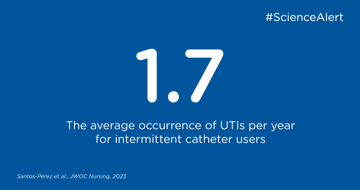
key:global.content-type: Artikkeli
Benign prostatic hyperplasia (BPH) is a leading diagnosis among males. Approximately 100,000 men are treated with transurethral prostate (TURP) surgery each year, making it one of the most common surgical procedures in the United States and several other countries.
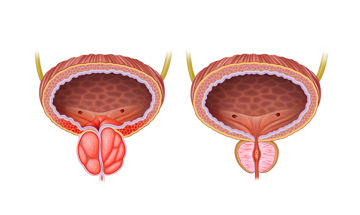
key:global.content-type: Julkaisun kohokohta
The traditional view of urine sterility has been challenged by the discovery of the urinary microbiome, meaning a mix of bacteria and microorganisms within the urinary tract. This unique relationship between microbes and humans is still not fully understood but has gained a lot of attention in clinical research in the last decade.
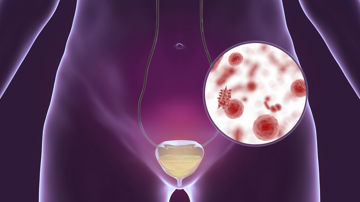
key:global.content-type: Julkaisun kohokohta
In this article we sum up the key findings and recommendations of a 2023 study by Bauer et al. which explores intermittent catheterization (IC) by children and adolescent in school settings.

key:global.content-type: Artikkeli
For those who cannot empty their bladder the normal way, intermittent catheterization is the therapy of choice to maintain urethral health.
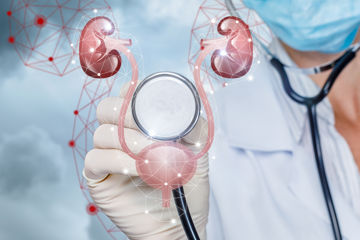
In this publication highlight you can read about the identification, assessment, and treatment of urinary incontinence and bowel control issues.

Keeping up-to-date and determining the veracity of scientific articles and clinical studies can be overwhelming, so we’ve put together a checklist to help you.
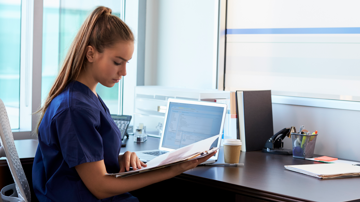
In this publication highlight you can read about how constipation impacts urogenital symptoms in women.
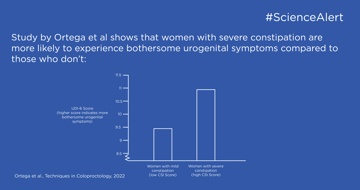
key:global.content-type: Artikkeli
In this publication highlight you will learn more about autonomic dysreflexia (AD) an how to manage an AD episode.

key:global.content-type: Artikkeli
In this publication highlight you can read more about how to evaluate neurogenic bladder and bowel dysfunction with a patient-centric tool, goal attainment scaling, to individualize management.
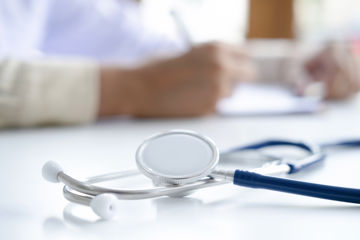
key:global.content-type: Artikkeli
A surprisingly high number of patients reuses catheters intended for single-use every day putting them at risk for unnecessary complications. Single-use hydrophilic catheters for intermittent catheterization lower the risk for short- and long-term complications and are a convenient and preferred choice for many patients.

key:global.content-type: Artikkeli
Introduction of a no-touch catheter/technique for intermittent catheterization seems to be well accepted both by caregivers and patients and it is not necessarily associated with higher costs. On the contrary, it could potentially reduce costs, saving time and errors in the healthcare system and reduce infection complications in general. The clinical evidence level is low for using no-touch technique/catheter to reduce UTIs but current available studies suggest benefits of it.
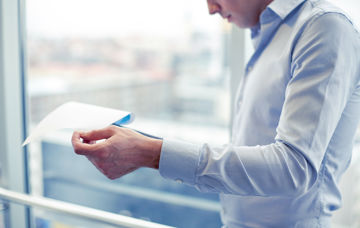
key:global.content-type: Artikkeli
Catheter associated urinary tract infections (CAUTI) are common in the hospital setting with consequential morbidity and mortality. The risk of bacterial adhesion and invasion of the urinary tract increases with use of an indwelling catheterization and may be reduced by adopting intermittent catheterization using hydrophilic single-use catheters.
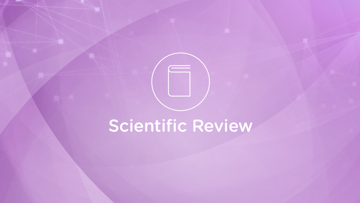
key:global.content-type: Artikkeli
Bladder management with intermittent catheterization is associated with complications. The most severe and common one is UTI.

key:global.content-type: Artikkeli
At Wellspect HealthCare we take our environmental responsibility seriously. We continuously work to minimize the environmental impact related to our products.
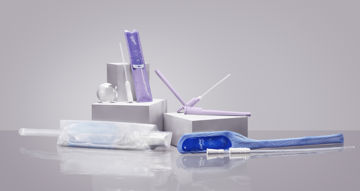
key:global.content-type: Artikkeli
With more than 30 years on the market, LoFric has been used and documented in several ways. In addition to efficiently emptying the bladder, LoFric’s versatile use includes treatment and prevention of recurrent strictures, administration of chemotherapy by bladder instillation, and resolution of rare complications.
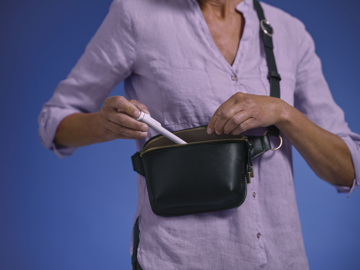
key:global.content-type: Artikkeli
Recurrent UTIs in children with neurogenic bladders constitute high risk of leading to severe kidney damage and need to be an area of attention. This study is useful in determining treatments and proactive measures for preventing recurrent UTIs.

Bladder instillation is used for local administration of drugs into the bladder. This is used for treatment of interstitial cystitis and cancer, for example. Drugs are being delivered by catheters and a hydrophilic-coated surface such as that of the LoFric catheters reduces the risk for trauma associated with instillation therapy.


Patient adherence plays a key role in a successful and cost-effective catheterization treatment. A patient who feels part of the decision-making, in control of his options and how they work with his lifestyle is more inclined to stick with his therapy and subsequently experience a good clinical outcome.

Urine often has a high concentration of particles and low content of water. This is referred to as high osmolality. Urine osmolality has a direct effect on catheter lubrication and plays an important role for people who use hydrophilic catheters. Catheters with a surface osmolality in balance with urine is key to reducing withdrawal friction.

A lubricated catheter is recommended to reduce damage to the urethra and lower the risk of hematuria which is a common complication. A cross-over study comparing different hydrophilic catheters showed an even lower frequency of hematuria in patients who chose LoFric.

Extensive studies support scientific literature claiming that use of hydrophilic catheters reduce urethral trauma and urinary tract infections. This in turn can minimize the need for antibiotics. Because of these benefits, we now know that hydrophilic catheters are one of the most cost-effective ways to prevent long term urological complications in general and UTI in particular.
Single-use hydrophilic catheters were developed in the early eighties to address long-term complications of intermittent catheterization as seen when reusing plastic catheters with add-on lubrication. As reported by Wyndaele and Maes1 and Perrouin-Verbe et al.2 the majority of complications related to intermittent catheterization occur after long-term use as a result of damage to the urethral wall from repeated catheterizations. In contrast, long-term use of LoFric hydrophilic catheters is reported to prevent urethral trauma and complications.3 4

WHO:n mukaan mikrobilääkeresistenssiongelma on niin vakava, että se uhkaa nykyaikaista terveydenhuoltojärjestelmäämme.1 Vuoteen 2050 mennessä se voi aiheuttaa 10 miljoonaa kuolemaa2 tai enemmän, jos emme voi käyttää tehokkaita antibiootteja.
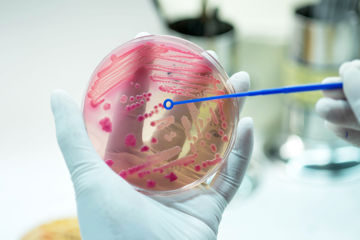
Available clinical evidence supports the strategy to always consider intermittent catheterization as the first therapeutic choice, before considering the use of an indwelling catheter. Intermittent catheterization is the first therapeutic choice and is a safer bladder management method than both urethral and suprapubic indwelling catheters. Intermittent catheterization is central to reduce morbidity related to renal failure and neurogenic bladder dysfunction.
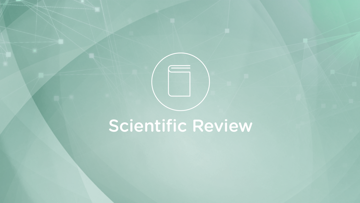
Syvenny kirjallisuuteen ja tieteelliseen dokumentaatioon.
key:global.content-type: Artikkeli
Take part of clinical evidence that speaks to the improved outcomes of using TAI in pediatric patients when coupled with an individualized approach upon initiation of TAI.

key:global.content-type: Artikkeli
Transanal irrigation's influence on gut microbiota could have a positive effect on the immune system and contribute to reduced UTIs, as per this clinical study by Futura et. al.
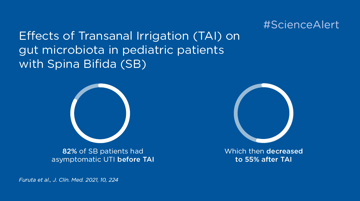
key:global.content-type: Artikkeli
Tässä webinaarissa puhuu tohtori Rebecca Haddad, joka on fysioterapiaan ja kuntoutukseen erikoistunut lääkäri, joka on keskittynyt geriatriaan Sorbonnen yliopistossa Pariisissa, Ranskassa. Hänen kliininen, tutkimus- ja opetustyönsä on omistettu ikääntyvien vammautuneiden hoidolle, ja hän keskittyy erityisesti virtsarakon vanhenemiseen.

key:global.content-type: Artikkeli
Tässä webinaarissa puhuu tohtori Gianluca Sampogna, urologinen kirurgi, joka työskentelee Milanon Niguardan sairaalan selkäydinvammayksikössä, joka on selkäydinvammaisten virtsarakon, suolen ja seksuaaliterveyden ongelmiin erikoistunut keskus. Hän johtaa seksuaaliterveysohjelmaa, joka tarjoaa monia ratkaisuja seksuaalineuvonnasta kuntoutukseen, lääkehoidosta leikkaukseen. Luento on englanniksi.

key:global.content-type: Artikkeli
Tässä webinaarissa puhuu tohtori Gianna Rodriguez, kliininen professori Michiganista Yhdysvalloista. Hän on selkäydinvammaohjelman johtaja Michigan Medicine -yliopiston fysiatrian ja kuntoutuksen osastolla Yhdysvalloissa. Luento on englanniksi.

key:global.content-type: Artikkeli
This article explores how the aging process affects bladder and bowel function in SCI patients and discusses the need for specialized management strategies.

key:global.content-type: Artikkeli
A cost-effectiveness analysis of Navina Smart on adult patients affected by neurogenic bowel dysfunction.

key:global.content-type: Artikkeli
Transanal Irrigation (TAI) is known to be a successful therapy to treat LARS, and in this study, Orlandi et al explore the use of TAI as a treatment option for women with endometriosis who experience LARS-like symptoms.

key:global.content-type: Artikkeli
In this webinar you will hear from Dr. Rebecca Haddad who is a physician specializing in Physical Medicine and Rehabilitation with a focus on geriatrics at Sorbonne Université in Paris, France. Her clinical, research, and teaching work is dedicated to the care of people aging with disabilities, with a particular focus on bladder aging.

key:global.content-type: Julkaisun kohokohta
In this publication highlight you can read about how to manage bowel dysfunction in individuals with cauda equina syndrome.
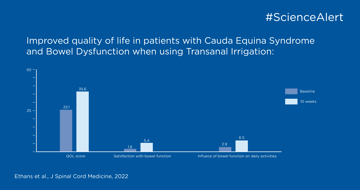
key:global.content-type: Artikkeli
Take part of clinical data on transanal irrigation as a mean to manage neurogenic bowel in the pediatric population with Spina Bifida

key:global.content-type: Artikkeli
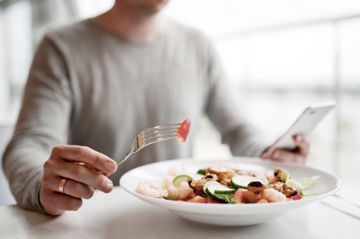
In this publication highlight you can read about the identification, assessment, and treatment of urinary incontinence and bowel control issues.

Keeping up-to-date and determining the veracity of scientific articles and clinical studies can be overwhelming, so we’ve put together a checklist to help you.

In this publication highlight you can read about how constipation impacts urogenital symptoms in women.

key:global.content-type: Artikkeli
In this publication highlight you will learn more about autonomic dysreflexia (AD) an how to manage an AD episode.

key:global.content-type: Artikkeli
In this scientific review you will learn more about incomplete emptying causes and treatment.

key:global.content-type: Artikkeli
In this publication highlight you can read more about how to evaluate neurogenic bladder and bowel dysfunction with a patient-centric tool, goal attainment scaling, to individualize management.

key:global.content-type: Artikkeli
In this publication highlight you can read about pediatric constipation causes, impact and management.
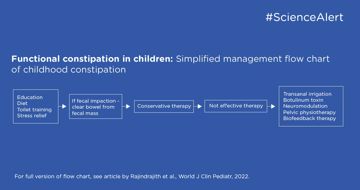
key:global.content-type: Artikkeli
Bowel problems in children are common, up to 29% of children can be affected by functional constipation and functional fecal incontinence, where the symptom origin is not known.
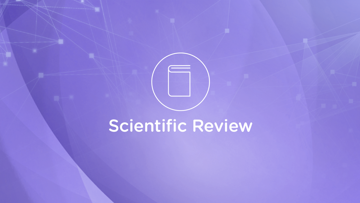
key:global.content-type: Artikkeli
In this science article a combined retrospective and cross-sectional survey study investigates chronic idiopathic constipation in children and bowel regimen with bowel irrigation, also called transanal irrigation (TAI).
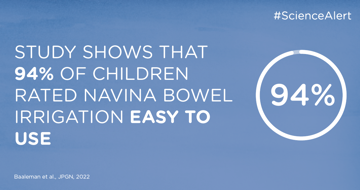
key:global.content-type: Artikkeli
In this summary you can read about what a neurogenic bowel is and goals and recommendations for treatment.

key:global.content-type: Artikkeli
This is a summary of the published article Long-term efficacy and safety of transanal irrigation in multiple sclerosis by Passananti et al. 2016
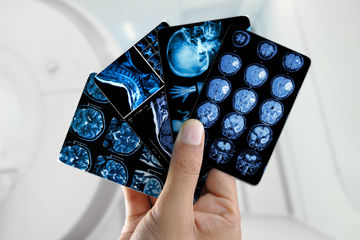
Summary of first data on Navina Smart

Bowel dysfunction is surrounded by misconceptions and taboos that may interfere with treatment and that may result in self-medication not always innocuous to the patient care.
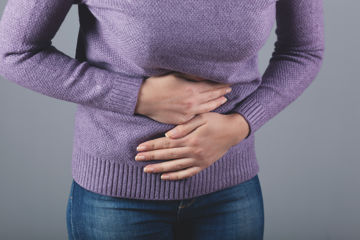
Transanal irrigation (TAI) is a well-documented and safe bowel management therapy. Today, compliance is the major issue with TAI therapy, and may be improved through greater knowledge of which patient is best suited for TAI. Patient training and close follow up with digital support during start up may also increase compliance.
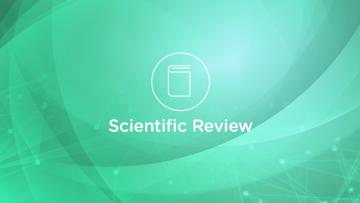
Defecation disorders are common in conditions affecting the nervous system, such as spinal cord injury, multiple sclerosis, spina bifida and severe Parkinson’s disease, and have great impact on self-esteem, personal relationships and social life.1,2 Severity of the disorder often correlates to quality of life2 which is why improving bowel function is rated among the highest priorities among affected patients.3,4 Transanal Irrigation (TAI) offers a good, non-invasive, treatment alternative for these patients.
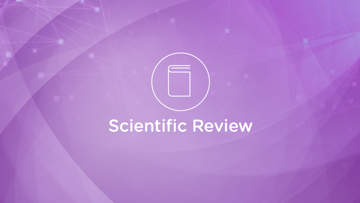
Fecal incontinence (FI) means involuntary loss of rectal content such as solid and liquid stool, mucus or flatus. FI is not a diagnosis but a symptom. It is considered a stigmatizing condition, and fear of having an accident in public restricts the social and working life for those who experience it. Although there are many treatment options, their long-term efficacy is poorly investigated.
